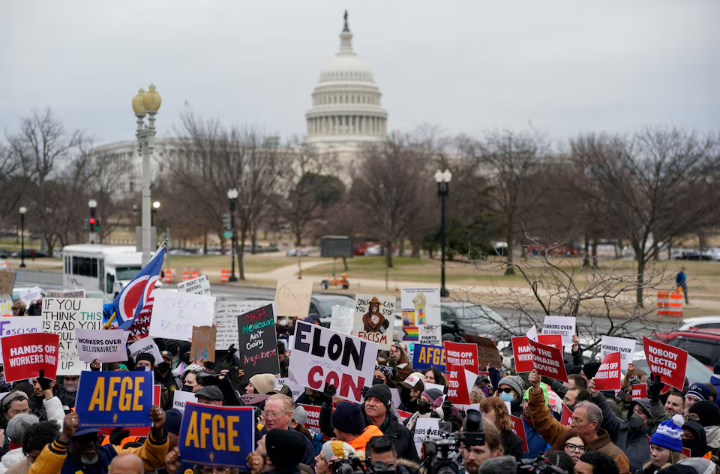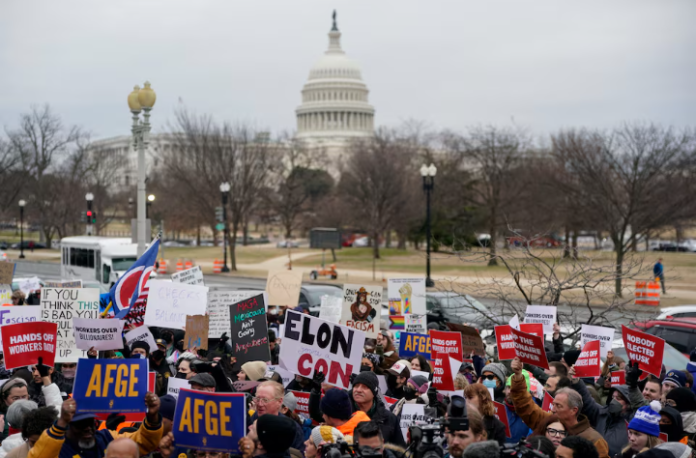The Trump administration’s sweeping effort to shrink the federal workforce is reaching a critical turning point. Millions of U.S. government employees have until Thursday to accept a buyout offer or risk losing their jobs as part of an unprecedented overhaul. This move has sparked protests, lawsuits, and deep uncertainty within the nation’s capital.
A Drastic Move to Cut Government Size
President Donald Trump is pushing ahead with his aggressive plan to downsize the federal government, a move that has rattled Washington and raised concerns about legality and fairness. By Wednesday night, over 40,000 federal workers had accepted the buyout, according to inside sources. However, with a workforce of approximately 2.3 million civilian employees, the final number of those who will accept the offer remains uncertain.
The buyout package offers continued salary payments until October for those who resign voluntarily. However, those who refuse may still face job cuts, as the administration is moving forward with layoffs regardless of participation. The uncertainty has fueled anxiety among government workers, with many choosing to fight the program in court.
Legal Battles and Union Resistance
Federal worker unions have taken legal action against what they call an unlawful “deferred resignation program.” A judge in Boston is set to hear arguments on Thursday, but many fear that the administration will push forward regardless of the court’s decision.
Adding to the controversy, the buyout program is not limited to domestic agencies like the Department of Labor. Even intelligence agencies such as the CIA have been affected, raising national security concerns. The restructuring effort, spearheaded by billionaire adviser Elon Musk, has already led to widespread personnel purges, including in the U.S. Agency for International Development, significantly scaling down America’s humanitarian aid efforts.
Deepening Workforce Cuts and Political Fallout
Sources inside the Office of Personnel Management revealed that the initial layoff target was 30% of government employees, but this has now jumped to a staggering 70%. Departments across the board are feeling the pressure, with the Justice Department already terminating prosecutors involved in cases related to the January 6th Capitol attack. In addition, the administration has demanded the names of up to 6,000 FBI agents who played a role in those investigations, fueling fears of political retaliation.

While Republican lawmakers, who hold the majority in Congress, have welcomed these cuts as a move toward eliminating government inefficiencies, Democrats argue that the overhaul is unconstitutional. They claim that Trump is overstepping his authority, as budgetary decisions legally fall under Congress’s jurisdiction.
Uncertain Future for Federal Workers
Government employees describe a tense and demoralized atmosphere, with many unsure of their future. “Everyone is stressed and frustrated. The mood is awful,” admitted one worker at the Department of Health and Human Services.
Despite Democratic opposition, Republicans remain in firm support of the plan. On Thursday, Senate Democrats are expected to vote against confirming Russell Vought as the new White House budget chief. However, with 53 Republican senators backing him, his confirmation appears inevitable.
As the deadline looms, thousands of government workers must decide whether to take the buyout or gamble on an uncertain future. With ongoing legal challenges and increasing political divisions, the outcome of this restructuring could reshape the federal workforce for years to come.



